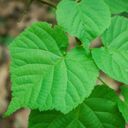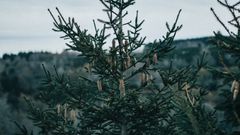
Linden tree: Uses and characteristics
The Linden tree, also known as Lime, is a versatile tree that often attracts attention for its beauty and the abundant shade it provides. It is also appreciated for its many medicinal and culinary uses.
Linden
Also known as the Linden tree, the Lime tree (Latin name 'tilia') is a member of the Tilia genus and part of the Tiliaceae or Malvaceae family. This tree grows quickly and stands tall, making it a striking addition to any landscape. It provides ample shade, creating a welcoming and soothing atmosphere.
The Linden tree's fragrant flowers attract bees and are often used in herbal teas for their calming effects. With its simple care needs and love for sunny, chalky soil, the Linden tree is valuable, adding a beautiful touch of nature to its surroundings.
Why EcoTree plants Linden trees:
The Linden tree is a majestic tree that has graced European landscapes for centuries. The tree offers a multitude of uses and benefits. Its fragrant flowers are prized for their soothing properties in herbal teas to promote sleep and cooking to flavour desserts and infusions.
Its wood, which is light and easy to work, is coveted by craftspeople for carving and joinery, giving rise to pieces of incomparable finesse. What's more, EcoTree chose Linden because the tree attracts bees. In fact, bees love this tree and its fragrant flowers. Both domestic and wild bees pollinate the Linden tree. Its nectar glands produce up to five milligrams of nectar a day. These glands, fed by the plant's elaborate sap, transform this sap into a product richer in sugars. The floral nectaries, known as intrafloral nectaries, produce nectar to attract pollinators. This attracts bees, as well as many foraging insects such as butterflies.
Linden - Overview
Linden - Overview

Linden - Species requirements
The Linden tree prefers a temperate climate with sunny or semi-shady exposure. It adapts to various soil types, ideally rich and well-drained, slightly acidic to neutral pH. They are preferably planted in autumn or spring, at least 8 to 10 metres apart. Regular watering is necessary for young trees, then occasional watering in dry periods. Mulching helps to retain moisture, and annual fertilisation with compost is beneficial. Pruning in late winter or early spring removes dead branches. After germination, the young shoots quickly develop roots and grow rapidly, up to 60 cm a year. With age, growth slows, but the tree thickens to form a large canopy. It produces fragrant flowers and fruit in late spring. It reaches 15 to 40 metres at maturity and lives for several centuries or even more than 1,000 years.
Linden trees and its uses:
Linden trees are not just beautiful; they have many uses in medicine, cosmetics, crafts, and the kitchen. In medicine, the flowers, bracts, and sapwood of the Linden tree are known for their calming, antispasmodic, anti-rheumatic, and diuretic properties. These parts are used in teas, gargles, compresses, lotions, and inhalations. The flowers are also utilised in gemmotherapy, phytotherapy, and aromatherapy.
The hydrolate from distilling Linden flowers soothes and relaxes sensitive skin in cosmetics. The wood of the Linden tree is also easy to carve in crafts, making it perfect for musical instruments and kitchen utensils. It is also ideal for indoor use, such as making furniture, cabinets, and toys. The bark fibers can also be turned into cloth, rope, or paper.
The young, tender leaves are also often used in the kitchen to make drinks, liqueurs, and other culinary creations. The leaves can also be ground into nutritious flour. The flowers attract many insects, especially bees, producing highly fragrant honey.
The symbolism of Linden:
The Linden tree has had a sacred significance since ancient times. The wood was used in ancient Egypt to make sarcophagus masks, testifying to its symbolic value and ritual importance. In Celtic astrology, the Linden tree symbolises gentleness and flexibility, embodying values of inner peace and adaptability. Also known as the 'Tree of Justice', the Linden tree was the place where important judgements were made, its shade providing a sanctuary for deliberation and conflict resolution. Finally, as we mentioned earlier, the Linden leaf is shaped like a heart. It is, therefore, a symbol of love, friendship and fidelity. In Nordic regions, it is even linked to Frigga, the goddess of maternal love and fertility.
So it's the ideal gift for a wedding or even as a gesture of love! Give the gift of a Linden tree!
Our selection of trees
Our goal is to enable anyone to do something that benefits nature and helps us to live in a more harmonious world. So why not become a tree owner in a European forest and help combat climate change?






Please note that this is promotional communication. See our notice of information.







